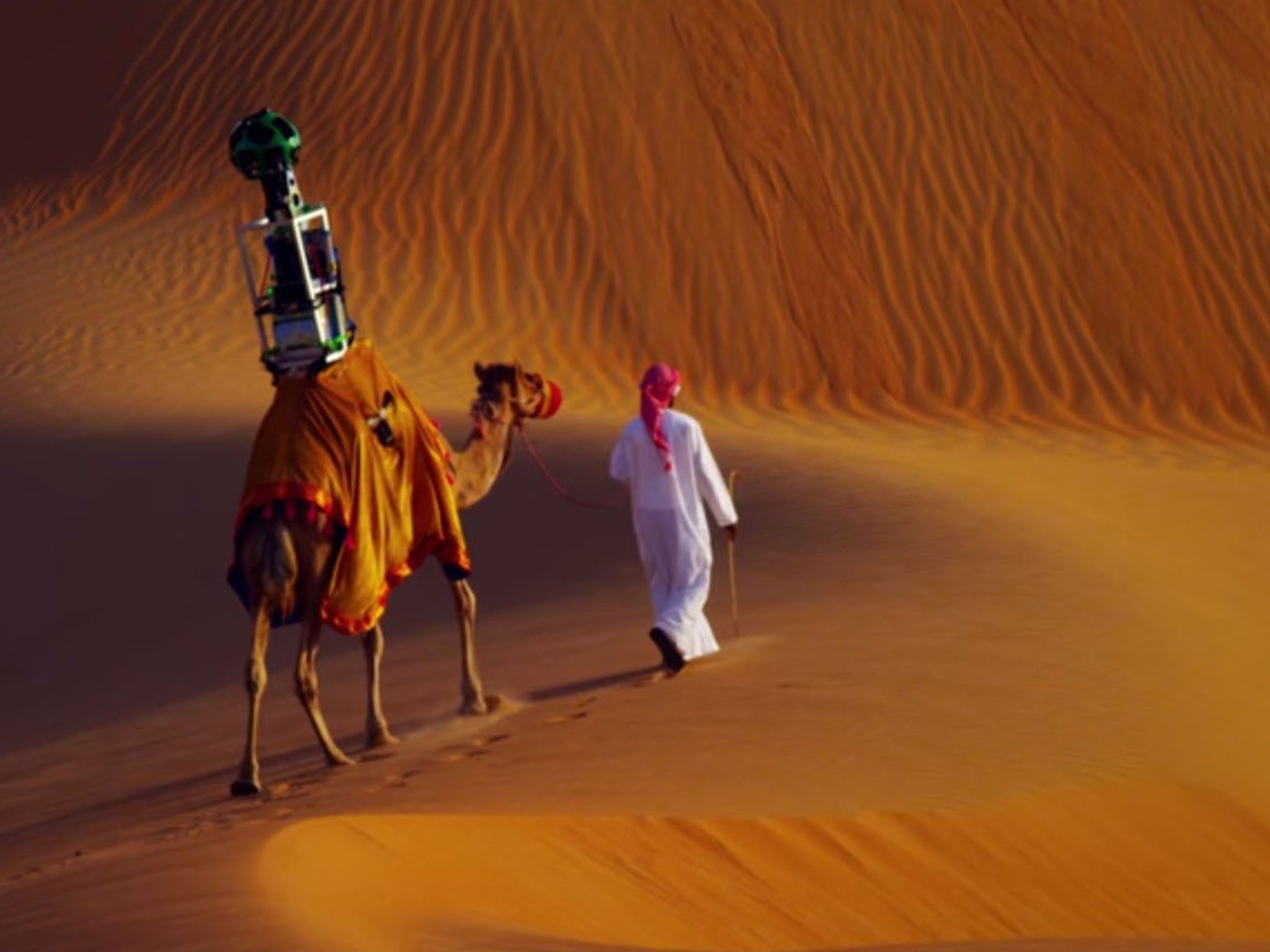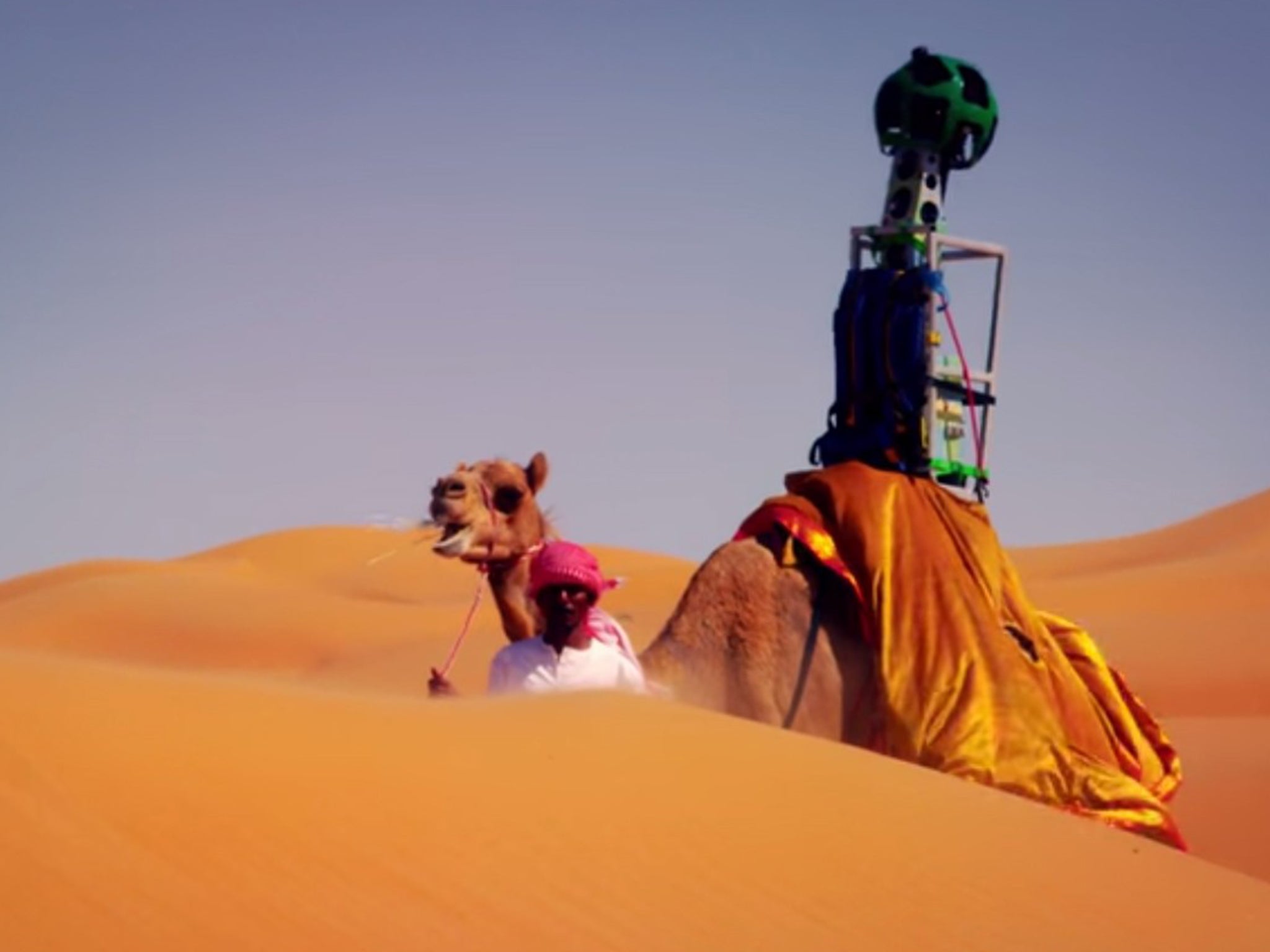Google sending its Street View cameras to the desert... on camels
The involvement of a camel is evidently a cute publicity stunt, but it does highlight Google’s growing interest in facilitating armchair tourism

A friend of mine suffers from travel anxiety.
Her thoughts about how she’ll proceed from A to B are fraught with all manner of What Ifs, mainly prompted by not knowing what various stages of the journey will look like. Google Maps has proved to be a boon for her in this regard; its Street View facility, once restricted to urban thoroughfares, has since expanded to cover all kinds of places including, crucially, the interiors of major transit hubs such as airports and rail termini. Using Google Maps, my friend can visually preview the entirety of some of her trips, eliminating surprise and reducing her heart rate in one fell swoop. And if she happens to be planning a trip to the Liwa Desert on the Arabian peninsula any time soon, Google’s got that covered, too, thanks to a camel called Raffia.
The Trekker camera that you might see mounted on a Google vehicle to capture panoramic views can just as easily be mounted on a camel, and as a result of Raffia being taken for a rather long walk, areas around Liwa have now been captured and integrated into Google Maps. The involvement of a camel is evidently a cute publicity stunt, but it does highlight Google’s growing interest in facilitating armchair tourism. For two years now, successful applicants have been loaned the Trekker camera to document hard-to-reach destinations; these include the Galapagos Islands, the canals of Venice and the Great Barrier Reef. These places all figure pretty highly on people’s lists of must-sees, but the unexplored holds similar allure. It would be nice to think of Raffia as a trailblazer, with various animals providing us with panoramic views that we’d never normally get to see – but the Trekker is a hefty thing that stands a metre tall. Certainly not something you’d relish strapping to the back of a brown bear.

Google has for many years enlisted the help of the public to document the great views of the world using a bolt-on service to Google Maps called Panoramio. Mainly used by serious amateur photographers, it’s about to be discontinued and subsumed into a broader Google Maps add-on called Google Views. The Panoramiacs aren’t entirely happy about this; they fear an imminent influx of amateurs wielding their smartphones, but as far as Google is concerned, the more data the better. An app called Photosphere is now available for Android and iOS, mimicking the Trekker camera to provide Google with geotagged panoramic views of Machu Picchu, or maybe Birmingham’s Bullring. If it’s geotagged and shared on Google+, your photo will be added to Views and, if approved by Google, will also be visible on Google Maps. Many would question why we’re delighted to do Google’s heavy lifting for free, but perhaps it’s vanity; the prospect of our photo becoming the pre-eminent online representation of a real-world landmark holds significant appeal.
This photographic splurge, whether it’s panoramic, portrait, landscape or otherwise, evidently points to a time where the vast majority of the planet is not only documented, but also organised and attached to a navigable map, creating a virtual world very closely resembling our own which we can explore at leisure. This is an astonishing consequence of technological innovation that my travel-anxious friend would relish, but not all of us welcome that elimination of surprise. Part of the joy of travel, surely, is not knowing exactly what awaits you; I quite like the fact I didn’t know what Marseille’s Old Port or Tokyo’s Shibuya Crossing looked like before I wandered down there. Anyway, if you don’t want spoilers for your visit to the Liwa Desert, steer clear of Google Maps, but suffice to say, it’s very sandy.
Join our commenting forum
Join thought-provoking conversations, follow other Independent readers and see their replies
Comments
Bookmark popover
Removed from bookmarks